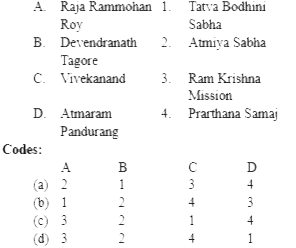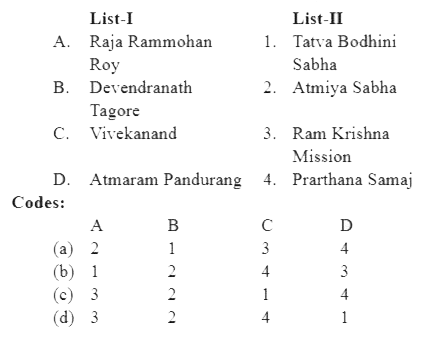Choose the correct order of the property given below:
N3−<O2− : Ionic radius
N>O: First ionization energy
N>O: Second ionization energy
N>O: Electron affinity order
The correct Answer is:B
To solve the question regarding the correct order of the properties of N3- and O2- ions, we will analyze the ionic radius, ionization energy, and electron affinity step by step.
Step 1: Compare Ionic Radius of N3- and O2-
1. Understanding Ionic Radius: The ionic radius of an anion increases with the increase in negative charge. This is because additional electrons repel each other, causing the electron cloud to expand.
2. Comparison:
- N3- has three extra electrons compared to its neutral nitrogen atom, while O2- has two extra electrons compared to its neutral oxygen atom.
- Therefore, N3- will have a larger ionic radius than O2-.
Conclusion: The order of ionic radius is N3- > O2-.
Step 2: Compare Ionization Energy of Nitrogen and Oxygen
1. Understanding Ionization Energy: Ionization energy is the energy required to remove an electron from an atom. It is influenced by the effective nuclear charge (Z-effective) and the size of the atom.
2. Comparison:
- Nitrogen (N) has the electronic configuration of 1s² 2s² 2p³, while oxygen (O) has 1s² 2s² 2p⁴.
- Although oxygen is smaller in size and has more nuclear charge, nitrogen has a half-filled p subshell (2p³), which is more stable and thus requires more energy to remove an electron compared to oxygen.
Conclusion: The order of ionization energy is N > O.
Step 3: Compare Electron Affinity of Nitrogen and Oxygen
1. Understanding Electron Affinity: Electron affinity is the energy change when an electron is added to a neutral atom. It is influenced by the effective nuclear charge and the size of the atom.
2. Comparison:
- Oxygen has a higher electron affinity than nitrogen because it is closer to achieving a stable octet configuration (2p⁶) after gaining one electron.
- Nitrogen, being less electronegative and having a half-filled p subshell, does not release as much energy when gaining an electron compared to oxygen.
Conclusion: The order of electron affinity is O > N.
Final Summary
- Ionic Radius: N3- > O2-
- Ionization Energy: N > O
- Electron Affinity: O > N
1. Understanding Ionic Radius: The ionic radius of an anion increases with the increase in negative charge. This is because additional electrons repel each other, causing the electron cloud to expand.
2. Comparison:
- N3- has three extra electrons compared to its neutral nitrogen atom, while O2- has two extra electrons compared to its neutral oxygen atom.
- Therefore, N3- will have a larger ionic radius than O2-.
1. Understanding Ionization Energy: Ionization energy is the energy required to remove an electron from an atom. It is influenced by the effective nuclear charge (Z-effective) and the size of the atom.
2. Comparison:
- Nitrogen (N) has the electronic configuration of 1s² 2s² 2p³, while oxygen (O) has 1s² 2s² 2p⁴.
- Although oxygen is smaller in size and has more nuclear charge, nitrogen has a half-filled p subshell (2p³), which is more stable and thus requires more energy to remove an electron compared to oxygen.
Conclusion: The order of ionization energy is N > O.
1. Understanding Electron Affinity: Electron affinity is the energy change when an electron is added to a neutral atom. It is influenced by the effective nuclear charge and the size of the atom.
2. Comparison:
- Oxygen has a higher electron affinity than nitrogen because it is closer to achieving a stable octet configuration (2p⁶) after gaining one electron.
- Nitrogen, being less electronegative and having a half-filled p subshell, does not release as much energy when gaining an electron compared to oxygen.
- Ionic Radius: N3- > O2-
- Ionization Energy: N > O
- Electron Affinity: O > N
Similar Questions
Knowledge Check
Coose the incorrect order of the property given below :
AN3<O2 inonic radiusBN>O:1st ionisation energyCN>O:2nd ionisation energyDN>O : Electron affinityCorrect order of the property indicated below−
ANa>Al>Mg>Si IE1BCl>S>O>F ΔHeg1CF>O>Cl>S ENDCl>O>F>S EA1Select the correct order for the property given in brackets.
AF+(g)<Cl+(g):(EAorder)BF+(g)<Cl+(g):(∣∣ΔHeg∣∣order)CO(g)<S(g):(∣∣ΔHeg∣∣order)DS2−(g)<Cl−(g),(IEorder)
Select the correct order for the property given in brackets.
View SolutionSelect the correct order for the property given in brackets.
View Solution
Choose the correct answer from the options given below :
View SolutionChoose the correct antonym for the word given below : Bankrupt
View SolutionMatch the property given in Column I with the element given in Column II and Choose the correct option from the codes given below.

View Solution


